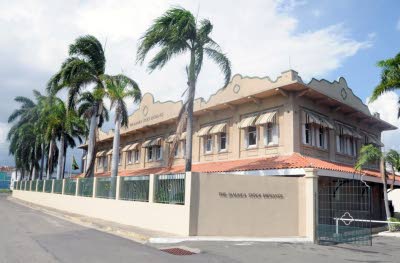Sunday, December 27, 2015
In an article entitled ‘It’s Jammin: Jamaica’s tiny stock market conquers the world in 2015’,
Bloomberg reported that the JSE surged more than 80 per cent in 2015 as a result of foreign acquisitions, stronger investor safeguards and a rebounding economy.
It added that 29 of the 57 stocks traded on the main and junior markets saw year-over-year post-tax profits of rise 10 per cent or more. Eight saw profits spike more than 100 percent, led by the Jamaica Stock Exchange Group’s 1,658 percent growth for a $1.2 million profit for the 12 months that ended in September.
“It is always a risk to say this time is different, but for the first half of the year, at least, I currently believe investors should stay in the local market,” Collister stated in an emailed response to queries from the
Jamaica Observer on Thursday.
His remark follows similar periods of extremely high Jamaican stock market appreciation in 1992 and 2004, after which the local market either fell sharply or drifted down the year after. Collister noted that in the long bear market that followed each boom year, it took roughly a decade for stocks to sustainably reach the highs of the previous boom, while losses suffered by investors were increased by currency devaluation.
“Both previous occasions were clear stock market bubbles, with stocks getting severely overvalued relative to their fundamentals. This time around, Jamaica has eliminated its fiscal deficit, and reduced its current account deficit to a level that is more than fully financed by inflows of foreign direct investment, ‘cold’ rather than ‘hot’ money,” he said.
Collister noted that while Jamaica remains a vulnerable economy that is still finding it difficult to grow, the macroeconomic risks have been sufficiently reduced so that higher stock prices are still justified for many stocks — particularly some of the blue chips which remain below their ‘fair’ market values.
“Some companies should also see improved earnings going forward, reducing their valuations on a long-term basis to attractive levels. While investors should certainly not expect the level of gains they experienced last year — as some stocks are essentially fully valued — on the whole, stocks are nevertheless likely to return a multiple of what investors can get in local fixed-income instruments, and are again likely to outperform many of the global markets,” he told the
Sunday Finance.
He added that the risks to this forecast includes the possibility of a desperate “run wid it” budget in the second half of the calendar year if the Government finds itself unable to have an early election, in addition to global economic risks.
“This is not my base case, but it is worth watching closely for any signs of such a scenario,” the analyst stated.
Meanwhile, business development manager at Barita Investments Limited, Sean Taylor, said Barita has been “blowing the trumpets” on Jamaica Stocks for quite some time.
“The local stock market would have given equity investors a very merry Christmas. The smart investor will read this article (
Bloomberg) and not throw their money at ‘any and every’ stock; for many are at high values. Yet, there still remain pockets of opportunities in the local equities market,” he said.
“A number of stocks are still trading at attractive levels, with trading ratios of up to eight times price to earnings and close to half of their book value, creating a potentially good entry point in the long term. The over $60-billion liquidity expected to hit the market next year, along with the proposition from the finance minister to utilise the exchange to divest State-owned enterprises, all bode well for the local equities market going into 2016,” Taylor continued.
Assistant vice-president of trading and business development at Sterling Asset Management, Yanique Leiba-Ebanks, told




Leave A Comment